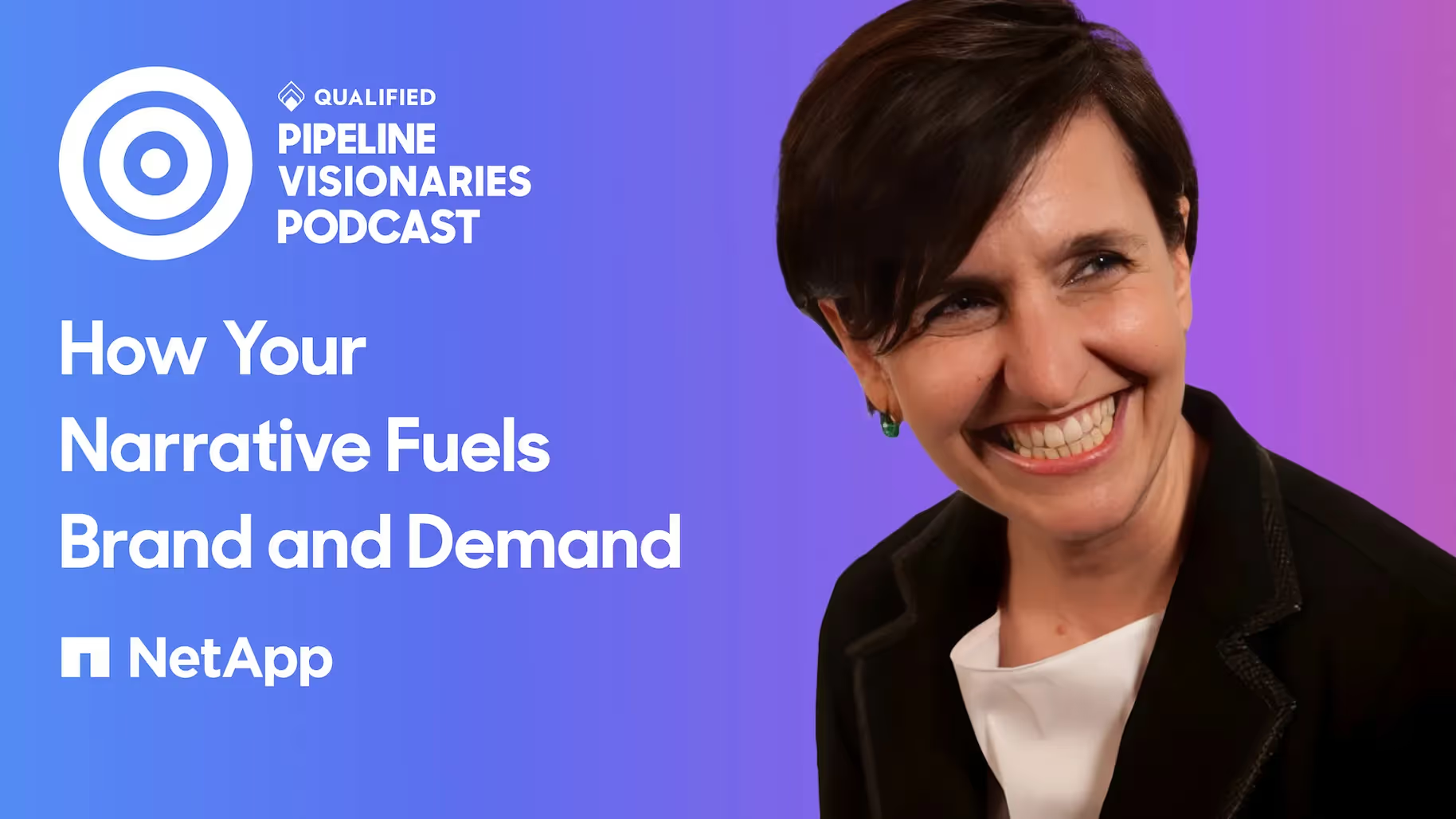How Your Narrative Fuels Brand and Demand
Gabie Boko, CMO at NepApp, shares with us why you can’t have brand without demand or demand without brand and how it all starts with your narrative.




Gabie Boko, CMO at NepApp, shares with us why you can’t have brand without demand or demand without brand and how it all starts with your narrative.

This episode features an interview with Gabie Boko, CMO at NetApp, a hybrid cloud data services and data management company, offering cloud data services for management of applications and data both online and physically.
In this episode, Gabie shares with us why you can’t have brand without demand, her desire for partnerships vs handoffs, and the beauty of marketing agility. Gabie also helps us unpack why running a brand of commas isn’t the goal, but rather how companies can work toward stabilizing the functions and innovations they offer customers through their brand narratives.
Key Takeaways
Stay up to date with weekly drops of fresh B2B marketing and sales content.
Gabie Boko, CMO at NepApp, shares with us why you can’t have brand without demand or demand without brand and how it all starts with your narrative.


This episode features an interview with Gabie Boko, CMO at NetApp, a hybrid cloud data services and data management company, offering cloud data services for management of applications and data both online and physically.
In this episode, Gabie shares with us why you can’t have brand without demand, her desire for partnerships vs handoffs, and the beauty of marketing agility. Gabie also helps us unpack why running a brand of commas isn’t the goal, but rather how companies can work toward stabilizing the functions and innovations they offer customers through their brand narratives.
Key Takeaways
Stay up to date with weekly drops of fresh B2B marketing and sales content.
Gabie Boko, CMO at NepApp, shares with us why you can’t have brand without demand or demand without brand and how it all starts with your narrative.


This episode features an interview with Gabie Boko, CMO at NetApp, a hybrid cloud data services and data management company, offering cloud data services for management of applications and data both online and physically.
In this episode, Gabie shares with us why you can’t have brand without demand, her desire for partnerships vs handoffs, and the beauty of marketing agility. Gabie also helps us unpack why running a brand of commas isn’t the goal, but rather how companies can work toward stabilizing the functions and innovations they offer customers through their brand narratives.
Key Takeaways
Stay up to date with weekly drops of fresh B2B marketing and sales content.
Gabie Boko, CMO at NepApp, shares with us why you can’t have brand without demand or demand without brand and how it all starts with your narrative.



This episode features an interview with Gabie Boko, CMO at NetApp, a hybrid cloud data services and data management company, offering cloud data services for management of applications and data both online and physically.
In this episode, Gabie shares with us why you can’t have brand without demand, her desire for partnerships vs handoffs, and the beauty of marketing agility. Gabie also helps us unpack why running a brand of commas isn’t the goal, but rather how companies can work toward stabilizing the functions and innovations they offer customers through their brand narratives.
Key Takeaways
Discover how we can help you convert more prospects into pipeline–right from your website.